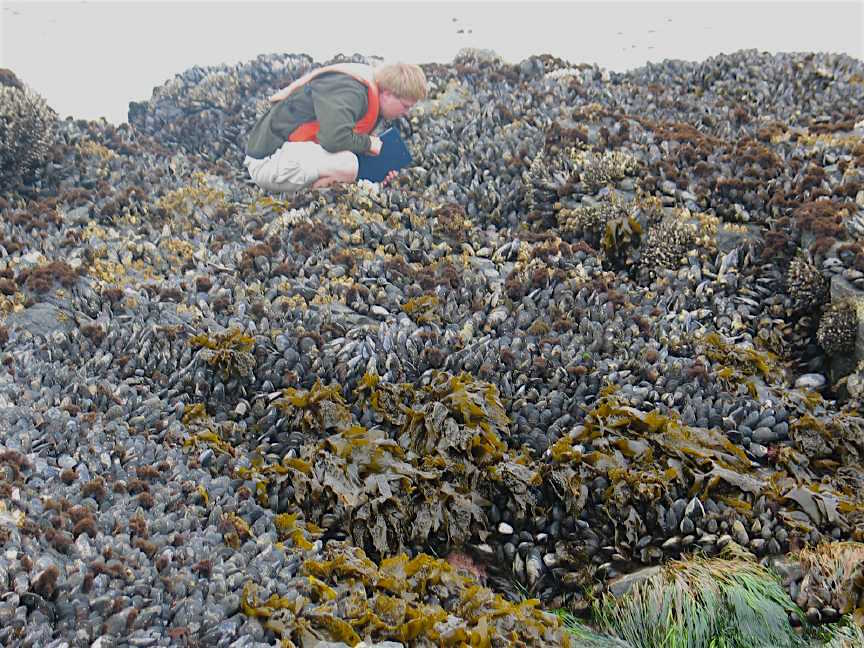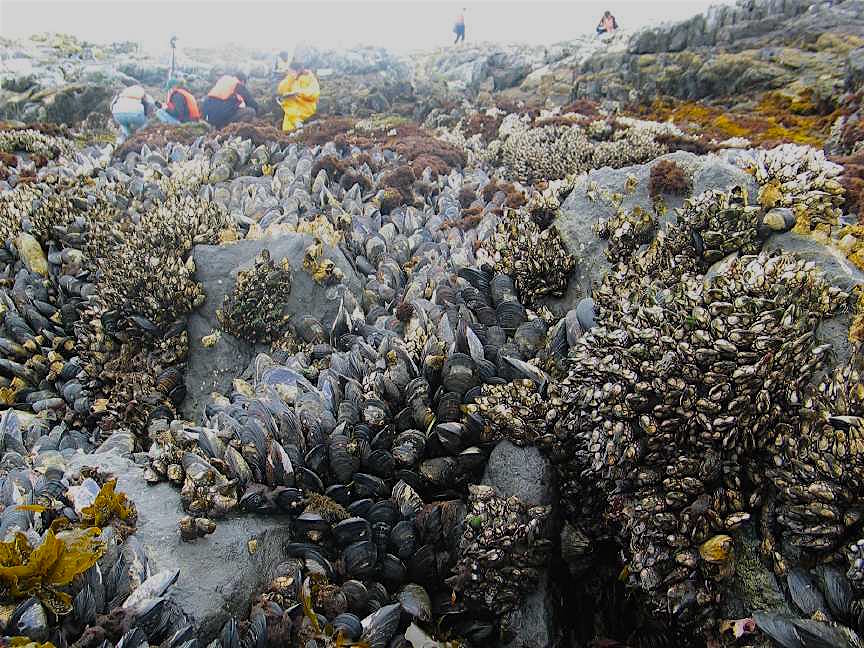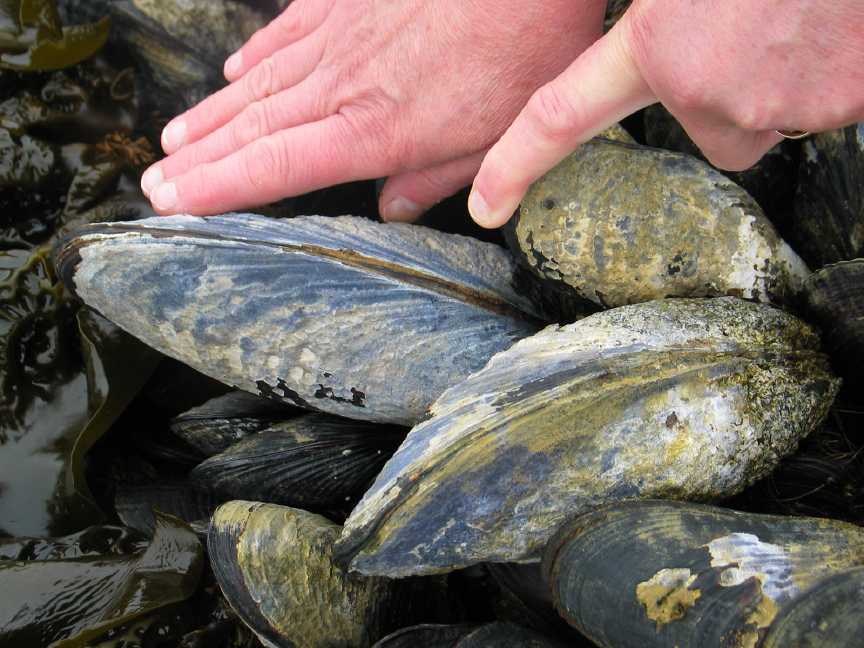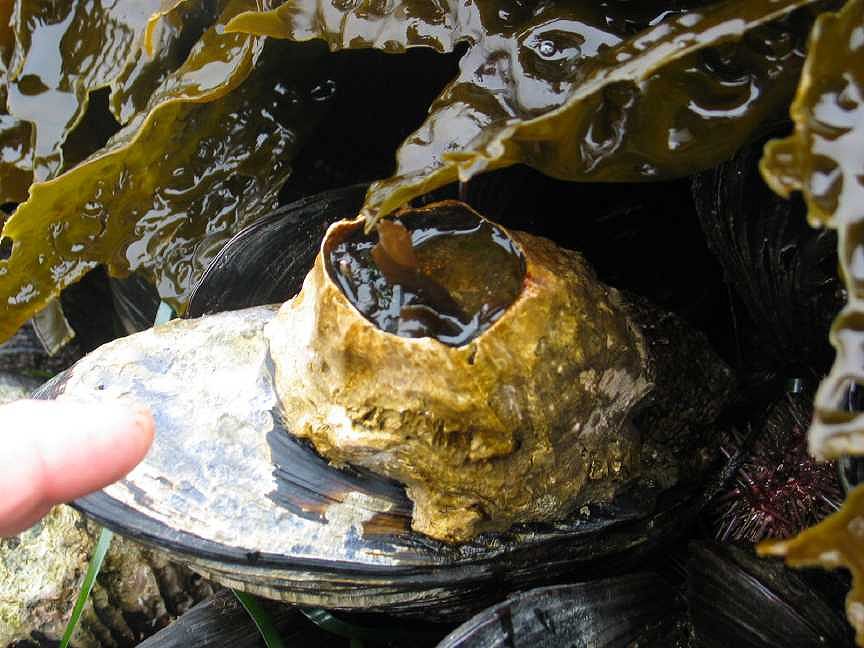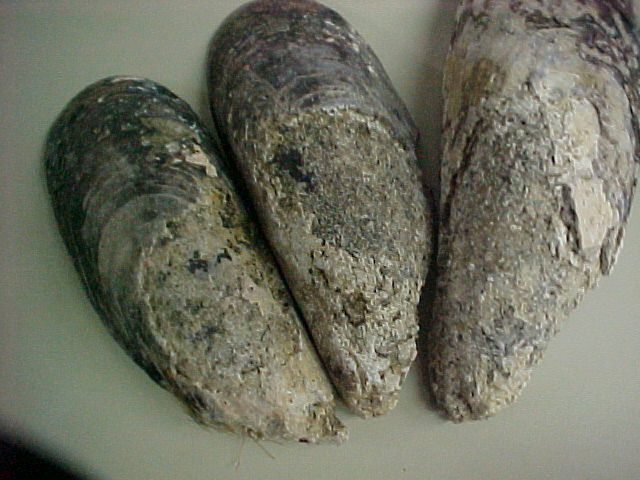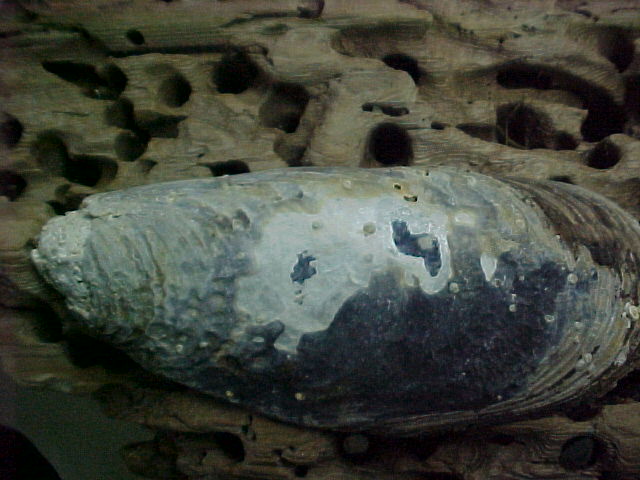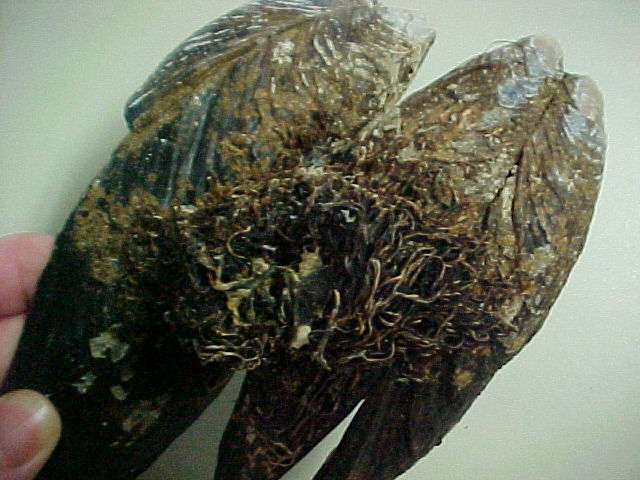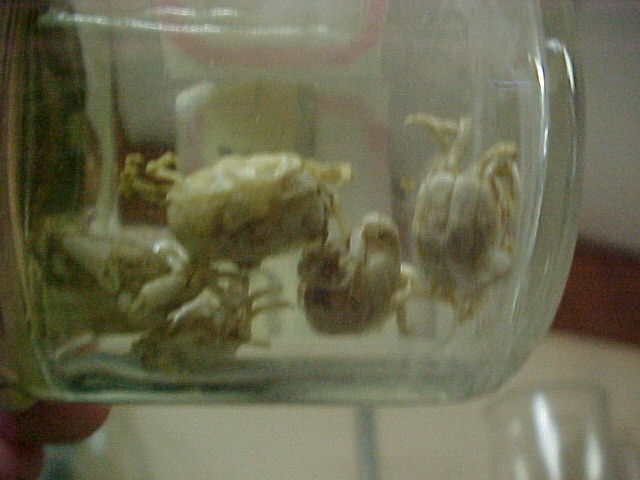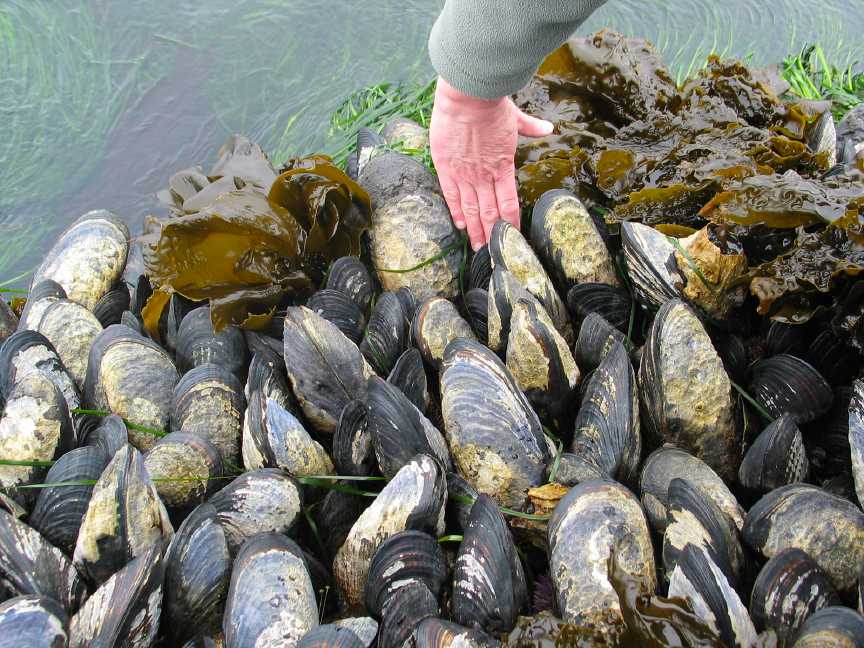
Very old and large Mytilus californianus in the intertidal zone at Race Rocks. This is one of the advantages of long term preservation of the area as an Ecological Reserve.
- At low tide on the South West corner of Great race Rock, the mussel beds lie on a horizontal reef,no space exists without some organism attached.
- Mussel beds and goose neck barnacles exist in close proximity. G. Fletcher photos
- The size of the mussels here is in the range of 35 cm.
- This mussel will no doubt have a competition for food with this barnacle.
- These shells are also heavily parasitised
- The shells of old mussels become riddled with parasites.
- Often kelp attaches to mussels and then uproots it when wave action gets severe. This shows a kelp holdfast attached.
- The pea crab (as one can see in the picture), Fabia subquadrata is found in many mussels.
The pea crab (as one can see in the picture), Fabia subquadrata is found in 1 to 3% of California mussels along the central California coast and 18% of mussels along Vancouver Island. This is a parasite that lives within the shell, because they rob food from their host and sometimes damage one of the gills. Public health codes usually prohibit the marketing or serving of parasitized animals but since the pea crab is very tasty, organisms with this crab are sometimes sold. Moreover, in a small portion of the population you can find imperfect pearls. These are of no value. http://www.lanecc.edu/science/zonation/mussel.htm (accessed 31 January 2002)
Morris, R., P. Abbott and E. Haderlie. 1980. Intertidal Invertebrates of California. Stanford University Press, Stanford, California. 690 pages.
Domain Eukarya
Kingdom Animalia
Phylum Mollusca
Class Bivalvia
Subclass Pteriomorpha
Order Mytiloida
Family Mytilidae
Genus Mytilus
Species californianus
Common Name: California mussel
Other Members of the Phylum Mollusca at Race Rocks.
and Image File |
 The Race Rocks taxonomy is a collaborative venture originally started with the Biology and Environmental Systems students of Lester Pearson College UWC. It now also has contributions added by Faculty, Staff, Volunteers and Observers on the remote control webcams. The Race Rocks taxonomy is a collaborative venture originally started with the Biology and Environmental Systems students of Lester Pearson College UWC. It now also has contributions added by Faculty, Staff, Volunteers and Observers on the remote control webcams.Simon Michaud PC Yr. 28 |
